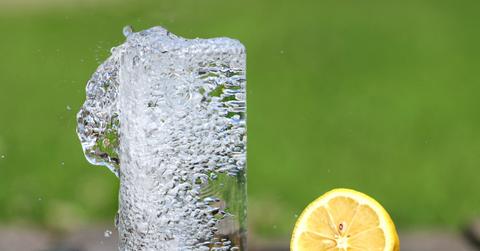Innovative Filtration System Makes Clean Water Accessible
A team of Rice University scientists could have invented a more efficient and reliable way to remove toxins in our water. This filtering system, which looks like a ball of cotton, can remove over 99 percent of heavy metal contaminants and can regenerate itself.
Updated May 26 2019, 5:50 p.m. ET
For many people, water filters are nearly a requirement to have in the household. In general, they are able to eliminate some of the runoff that lands in the liquid from treatment centers and through the kitchen faucet. Sadly, as great as these filters are, they aren’t as effective over time and many users don’t perform maintenance on a regular basis with them. That’s paved the way for a new reusable filter that nearly cleans out all the problems that could be in our water.
The Barron Research Group at Rice University has come up with SENT, or a supported-epoxidized carbon nanotube. It has the ability to eliminate over 99 percent of heavy metal contaminants that are hazardous to our health. This could be anything from mercury, arsenic, thallium, and commonly lead. It’s important to monitor how much goes into our bodies as it can cause heart disease, birth defects, dementia, and other unfortunate symptoms.
The Environmental Protection Agency (EPA) sets maximum concentration levels for these metals. Older homes and places with an older pipe system are more prone to have one of the more toxic metals, lead. Anything above a level of 0.005 milligrams per liter of lead is considered extremely hazardous.
SENT’s filter could be confused with a piece of cotton, and one amazing benefit is the ability to be reused. Andrew R. Barron, head of the researchers in the project, told ResearchGate that the process was pretty simple once the plan was in place. The team “grew carbon nanotubes onto quartz wool, then epoxidized them to make them active to adsorb metal ions.” Then, they found out “vinegar reacts with the metal in solution to adsorb it.”
“Adsorb” shouldn’t be confused with “absorb.” The former relates to the metal forming along the surface of the wool. The filter also is able to regenerate to add efficiency and be reused. In their testing, they were able to eliminate 99.4 percent of heavy metals from 83,000 liters of heavily contaminated water with just one gram of their product. That one gram could cost as little as 25 cents.
Thanks to the cheap costs, this would be a viable solution to clean waters in Mexico and developing countries. The country just below the United States mostly drinks some form of packaged water. Places like Ghana and Congo have limited sanitary facilities, while 40 percent of the Ugandan population has to travel 30 minutes to get fresh water.
Barron mentioned two reasons in the ResearchGate interview on why they put so much effort into the study: “First, was the desire to be able to remove toxic metals from drinking water in remote locations that didn’t have power. The second was the Fukushima disaster, where there was a need to remove complex radioactive metal waste.”
Cheap and efficient options are coming to help keep water safe to drink. 3D-printed monitoring systems would be a great accompaniment to the SENT filter system to provide the best information about H2O. This would also be beneficial to many areas in the United States, especially those that live in more isolated towns, have older pipes, or have gone through a crisis like the citizens in Flint, Michigan.

